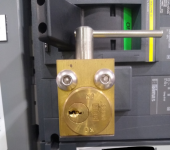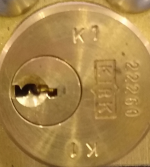jstpie5
Member
- Location
- Baton Rouge
Scenario:
There is a MV VFD that is fed by MV SWGR (in the same room).
Is there any NEC (or other applicable code) that requires a Kirk Key interlock between the VFD and the contactor in the MV SWGR?
I say it is good practice to have an interlock between the two, but it can be address by administrative procedures and be in compliance with applicable codes.
What say you fine gentlemen and gentleladies???
There is a MV VFD that is fed by MV SWGR (in the same room).
Is there any NEC (or other applicable code) that requires a Kirk Key interlock between the VFD and the contactor in the MV SWGR?
I say it is good practice to have an interlock between the two, but it can be address by administrative procedures and be in compliance with applicable codes.
What say you fine gentlemen and gentleladies???


